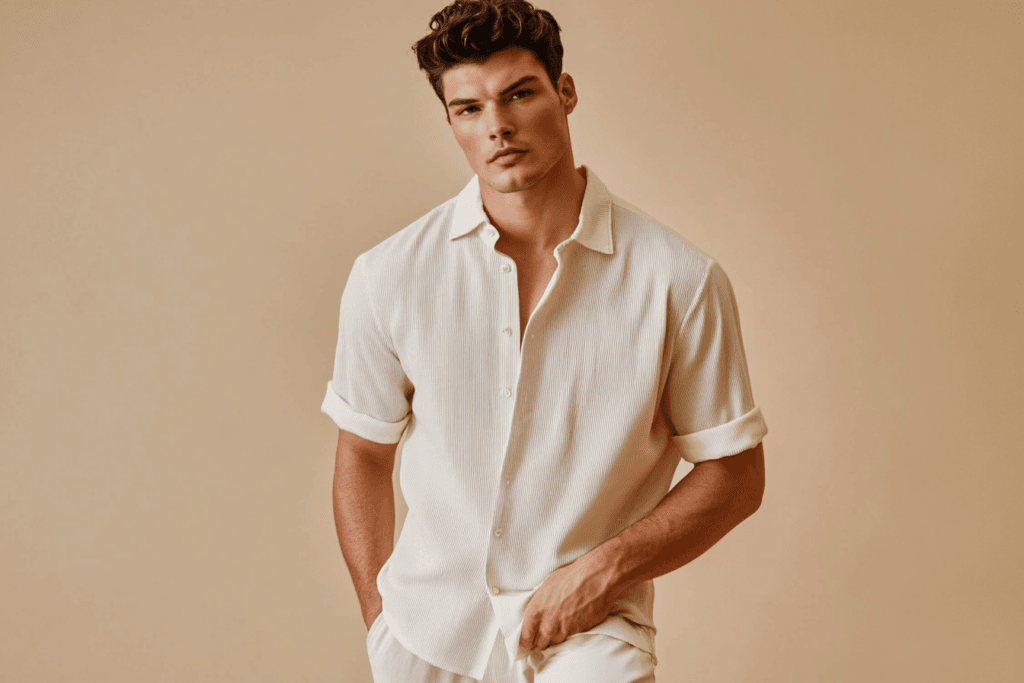
When I think of activewear, one thing matters—comfort. Let’s face it, nothing ruins exercise faster than sweat. Feeling soaked or too hot can stop you quickly.
That’s why moisture-wicking fabric and breathable materials are important. These fabrics don’t just keep you dry; they help you perform better. For example, a test showed athletes using breathable clothes improved. Their oxygen use went from 30 ml/kg/min to 50 ml/kg/min. That’s huge for anyone trying their best.
Also, strong fabrics are important. A 2023 study found 68% of shoppers want clothes with many uses, like managing sweat. Another 42% care about breathability and sweat control. So, these moisture-wicking fabrics aren’t just nice—they’re a must for athletes and fitness fans alike.
Key Takeaways
- Moisture-wicking fabrics help you stay dry and comfy while exercising.
- Breathable fabrics let sweat dry fast, keeping your body cool.
- Most shoppers want clothes that breathe well and control sweat. About 72% think this is the top feature.
- Polyester mesh is great for hard workouts because it dries fast and lets air flow.
- Bamboo blends are eco-friendly and dry faster than cotton, making them good for yoga or Pilates.
- Merino wool is great for outdoor fun. It stops bad smells, keeps you warm, and handles sweat well.
- Recycled polyester is eco-friendly. It uses less energy and water, helping the planet.
- You can test fabric breathability at home with easy tests like blowing on it or using water drops.
Why Should Activewear Brands Focus on Sweat Control and Cool Fabrics?
How Sweat and Cooling Work Together
Sweat happens when you exercise or get hot. It’s your body’s way to cool down. But not all fabrics handle sweat well. Cotton soaks it up, leaving you wet. Synthetic fabrics, however, move sweat away from your skin. This is called moisture-wicking. It helps sweat dry faster, keeping you comfy and dry.
These fabrics also help cool your body. When sweat dries, it takes heat away, cooling you off. This is super helpful during hard workouts or in hot weather. Scientists are improving this with new designs. They use tiny fibers and small holes in fabrics to manage sweat better. These changes make a big difference when regular clothes can’t handle heavy sweating.
What Shoppers Want: 72% Pick Breathable Fabrics First (2024 Study)
Now, let’s talk about what buyers want. Activewear is popular, not just for workouts but for its features. People want clothes that do more than look nice. They want them to work well. A 2024 study says 72% of shoppers think breathability is the most important feature.
Why is this? People care more about health and staying active. They want clothes that keep them comfy while moving. Features like sweat control, cooling, and even sun protection are now must-haves. Many also want eco-friendly options. Brands need to use recycled or natural materials without losing quality.
So, if you make activewear, focus on these features. The demand is real, and science proves it works. Plus, offering high-performing fabrics doesn’t just meet needs—it goes beyond them.
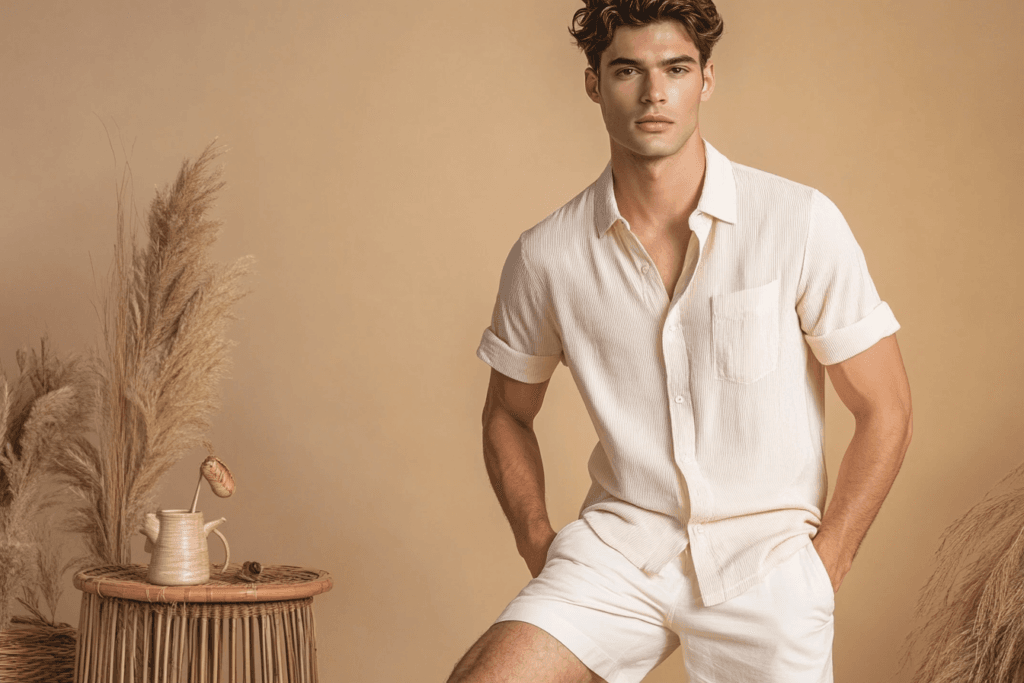
What Are the Best Moisture-Wicking Fabrics for Performance Wear?
Not all fabrics work the same for activewear. Some keep you dry and comfy, while others don’t. Here are three top fabrics that improve performance wear.
Engineered Polyester Mesh
Key Benefit: 45 CFM Airflow (ASTM D737 Certified)
Polyester mesh is great for tough workouts. It moves sweat away and lets air in. This keeps you cool and dry during exercise.
Why it’s awesome:
- Sweat doesn’t stick because it absorbs very little moisture.
- It’s strong and lasts through many washes and uses.
- It dries fast, so you’re not stuck in wet clothes.
Tests show polyester is great at managing sweat and staying strong. If you do CrossFit or run, this fabric is perfect.
Best For: High-Intensity Training Apparel
Natural Bamboo Blends
Key Benefit: 3x Faster Drying Than Cotton
Bamboo blends are eco-friendly and work well. They dry faster than cotton and feel soft on your skin. They also breathe naturally, making them great for yoga or Pilates.
Here’s a comparison:
| Study Title | Findings |
|---|---|
| Bamboo viscose as an eco-friendly alternative to cotton | Bamboo blends match cotton in comfort but manage sweat better. |
| Effect of bamboo/cotton blend proportions | More bamboo improves sweat management and breathability. |
These studies show bamboo blends are comfy and better at handling sweat than cotton. If you want sustainable and soft fabrics, bamboo is a great choice.
Best For: Eco-Conscious Yoga/Studio Wear
Merino Wool
Key Benefit: Natural Odor Resistance
Merino wool is amazing for outdoor and cold weather. It fights odors, so you can wear it longer without smelling bad.
Why it’s special:
- It absorbs lots of moisture but keeps your skin dry.
- It stops bacteria from growing, which prevents smells.
- It traps odors inside the fibers, so they don’t linger.
Studies show wool smells less than polyester and cotton. If you hike, ski, or camp, Merino wool is a must-have.
Best For: Outdoor and Cold-Weather Activities
Nylon-Spandex Blends
Nylon-spandex blends are amazing for tight and stretchy clothes. These fabrics mix stretchiness and sweat-wicking to feel like a second skin. If you’ve worn tight workout clothes, they were likely made from this blend.
Why nylon-spandex blends work so well:
- They don’t hold moisture, making them great for swimsuits.
- Spandex adds stretch, keeping clothes snug without losing shape.
- They dry fast and pull sweat away, keeping you comfy.
- These fabrics are flexible, letting you move freely during workouts.
Compression clothes benefit a lot from this fabric. They apply even pressure, which is why they’re also used in medical wraps. These clothes support your body without feeling too tight. Plus, nylon-spandex blends last long, even after many washes.

Key Benefit: Stretchy and Sweat-Wicking
This fabric stretches with your movements and keeps you dry. It’s perfect for sweaty workouts.
Best For: Tight and Performance Clothes
If you’re making leggings, sports bras, or fitted tops, use this fabric. It’s great for athletes needing support and flexibility.
Recycled Polyester
Recycled polyester is a top choice for eco-friendly activewear. Many brands now use it because it’s strong, useful, and better for the planet than regular polyester.
Here’s why recycled polyester is great:
- It uses 60% less energy to make.
- It lowers CO2 emissions by 32%, helping the environment.
- Water use drops by 94%, making it much greener.
- Factories collect 25 tons of material per hour for production.
Here’s a quick look at recycled vs. regular polyester:
| Feature | Recycled Polyester | Regular Polyester |
|---|---|---|
| Energy Use | -60% | N/A |
| CO2 Emissions | -32% | N/A |
| Water Use | -94% | N/A |
| Material Collection | 25 tons/hour | N/A |

Recycled polyester is just as strong and useful as regular polyester. It’s perfect for eco-friendly activewear like leggings, jackets, and more. It combines quality with care for the planet.
Key Benefit: Durable and Eco-Friendly
This fabric is tough like regular polyester but better for the Earth. It’s a win for brands and nature.
Best For: Green Activewear Lines
If your brand cares about the planet, choose this fabric. It’s great for making high-quality, eco-friendly activewear that shoppers love.
How Do You Verify Fabric Breathability Claims?
When choosing activewear, it’s important to know if the fabric keeps you cool. But how can you check breathability claims? Here are some ways, from lab tests to easy home checks.
Industry Standard Tests (ASTM/ISO Methods Explained)
Fabric breathability isn’t just a fancy term—it’s tested scientifically. Experts use special methods to see how air and moisture move through fabrics. Here are two common tests:
| Test Method | Performance Levels | What It Measures |
|---|---|---|
| Upright Cup Test (A1) | Low: <4,000 g m−2 d−1, Moderate: 4,000-8,000 g m−2 d−1, High: >9,000 g m−2 d−1 | Checks how much moisture vapor passes through using a drying agent. |
| Sweating Hot Plate (Ret) | Ret 0-6: Very good, Ret 6-13: Good, Ret 13-20: Okay, Ret 20-30: Poor, Ret 30+: Bad | Measures how well fabric handles heat and moisture loss. |
These tests help brands understand how fabrics perform during workouts. For example, the Sweating Hot Plate test shows how fabrics deal with heat and sweat.
Water repellency is also important for breathable fabrics. Spray tests check how water reacts on the fabric’s surface. This shows the balance between blocking water and letting air through.
Here’s a look at global water repellency standards:
| Standard | Country | Test Type | Purpose |
|---|---|---|---|
| GB/T 4745 | China | Surface wetting | Water resistance |
| AATCC 22 | US | Spray test rating | Water resistance |
| ISO 4920 | EU/Int’l | Spray test rating | Water resistance |
These tests ensure fabrics meet the needs of athletes. No one wants workout clothes that trap heat or stay soaked in sweat.
5 At-Home Checks for Quick Quality Assessment
If you don’t have lab tools, you can still test fabric breathability at home. Try these simple methods:
- The Blow Test
Hold the fabric to your mouth and blow. If air passes through easily, it’s breathable. If not, it may trap heat. - The Light Test
Shine a flashlight through the fabric. If light passes through or you see tiny holes, it’s breathable. Thick fabrics may block airflow. - The Water Drop Test
Drop water on the fabric. Breathable fabrics absorb and spread water fast. Less breathable ones make water sit on the surface. - The Sweat Simulation Test
Wet a small area and press it to your skin. Breathable fabrics feel cool and dry quickly. Others may feel sticky or damp. - The Stretch Test
Gently stretch the fabric. Breathable materials often stretch and return to shape. Stiff fabrics may block airflow.
These tests give you a quick idea of fabric performance. They’re not as exact as lab tests but are helpful when shopping or checking samples.
Whether testing at home or using lab methods, the goal is the same: finding fabrics that keep you comfy and dry. That’s why I always pick moisture-wicking fabrics—they’re the best for staying cool and confident.
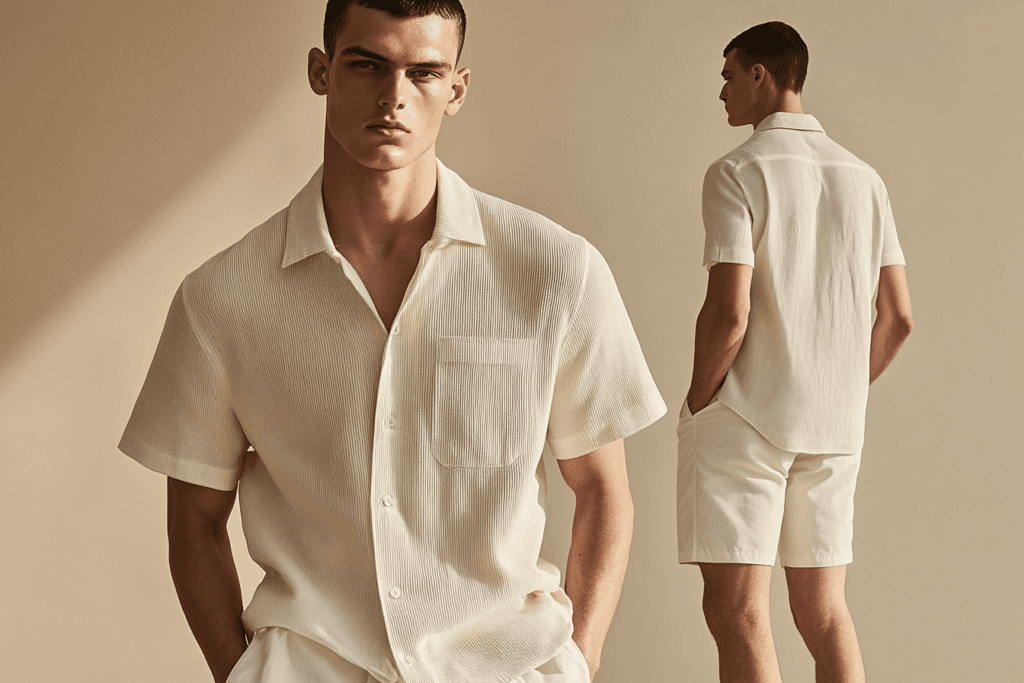
Where to Find Top Breathable Fabrics in 2025?
Looking for breathable fabrics can feel tricky. There are so many choices, and it’s hard to know where to begin. But picking the right supplier is super important. Let me share some trusted suppliers and tips for checking contracts.
Trusted Global Suppliers Overview
Some suppliers are well-known for their great fabrics. They focus on quality, new ideas, and being reliable. Here’s a simple chart to compare them:
| Supplier Name | Location | Specialty Fabrics | Sustainability Focus | Lead Time (Avg.) |
|---|---|---|---|---|
| Polartec | USA | Waterproof breathable fabrics | Recycled materials | 4-6 weeks |
| Toray Industries | Japan | High-tech moisture-wicking blends | Eco-friendly innovations | 6-8 weeks |
| Sympatex | Germany | 100% recyclable membranes | Carbon-neutral production | 5-7 weeks |
| Texon | UK | Bamboo and natural fiber blends | Ethical sourcing practices | 4-6 weeks |
These companies lead the fabric industry. They make materials that are comfy, useful, and eco-friendly. For example, waterproof breathable fabrics are growing in demand. By 2025, this market could reach $2.5 billion. It’s growing fast, with a 7% yearly increase expected from 2025 to 2033. Why? People want better outdoor gear for hiking and camping. Plus, more shoppers now prefer eco-friendly sportswear. These suppliers are ready to meet these needs.
Watch Out for Contract Issues (MOQ and Tolerance)
Now, let’s talk about contracts. It’s exciting to find a new supplier, but you need to read carefully. Some contract details can cause problems later. Here are a few things to watch for:
- High Minimum Order Quantities (MOQ):
Some suppliers ask for big orders upfront. This can be hard for small brands or new product lines. Look for suppliers with smaller MOQs that match your needs. - Unclear Quality Rules:
Tolerance clauses explain what fabric differences are okay, like thickness or color. If these rules aren’t clear, you might get bad products. Always ask for samples and detailed specs first. - Extra Fees:
Be careful of hidden costs like setup fees or penalties for small orders. These can add up and hurt your budget. - No Transparency:
If a supplier won’t explain their sourcing or production, that’s a bad sign. You need a partner who is honest and open about their work.
Pro Tip: Before signing, always talk about terms. Ask about delivery times, payment plans, and return policies. A good supplier will help you find a fair deal.
Picking the right supplier and avoiding these mistakes will help your brand succeed. It’s worth the time to do it right. Your customers and your brand deserve the best!
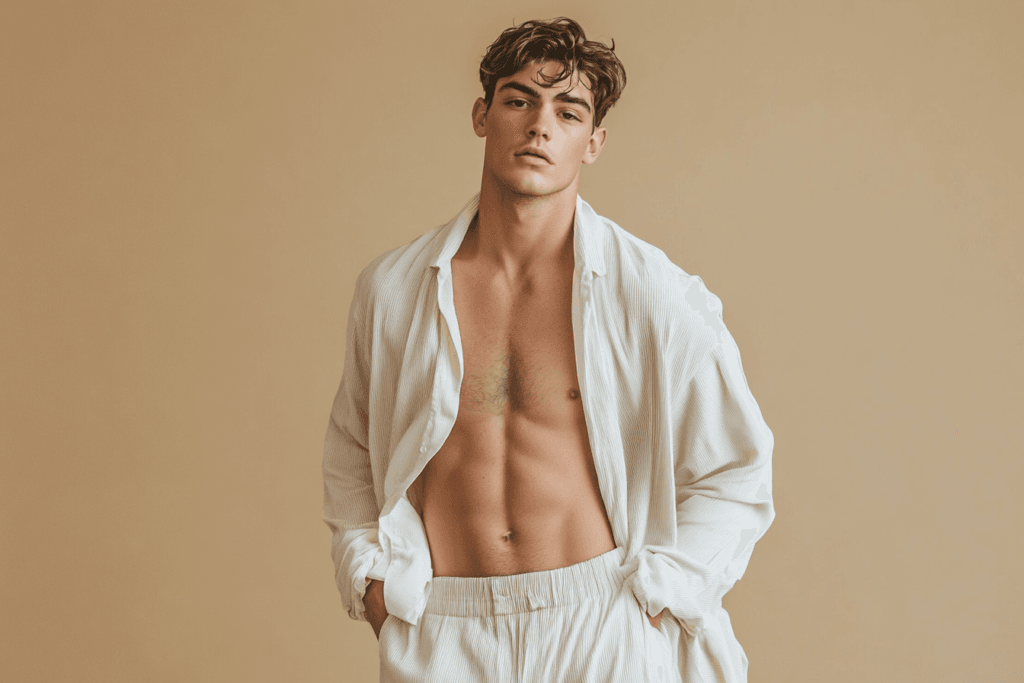
What Innovations Will Change Breathable Activewear?
Smart Fabrics That Adjust to Temperature
Imagine wearing a shirt that keeps you comfy, no matter the weather. It sounds like science fiction, but it’s real! Smart fabrics are now being used in activewear. These materials can sense your body temperature and adjust heat levels instantly.
For example, a French company called Clim8 has made smart clothing systems. Their technology uses tiny sensors to check your skin temperature. If needed, it turns on heating parts to keep you warm. This is a big step for comfort during workouts or outdoor fun.
Other brands are also working on smart clothes. These garments can control body heat, making them great for athletes. Some fabrics even change how they release heat based on your activity. They can trap heat or let it go, depending on how much you sweat. This makes staying active easier and more comfortable.
Pro Tip: Adding smart fabrics to your designs can make your brand unique. They’re not just cool—they’re useful too!
Eco-Friendly Fibers That Break Down Naturally
Let’s talk about helping the planet. Did you know fashion causes 10% of global pollution? A big reason is fabrics like polyester, which don’t break down. About 60% of sports clothes are made from this harmful material.
Here’s the good news: biodegradable fibers are here to help. These materials break down over time, reducing waste. They’re perfect for brands that care about the environment and still want high-quality products.
Since Covid-19, more people want eco-friendly activewear. Shoppers look for clothes that work well and are good for the Earth. Biodegradable fibers do both. They’re strong, wick sweat, and leave a smaller environmental impact.
🌱 Did You Know? Using biodegradable fibers can make your brand stand out. Many shoppers prefer sustainable products that match their values.
By using these new ideas, activewear brands can make better products. Smart fabrics and eco-friendly fibers are the future. They’re not just helpful—they’re also better for the planet.
Moisture-wicking and breathable fabrics are a big deal for activewear. They don’t just keep you dry—they make workouts easier and more comfortable. The activewear market is growing fast, from $339.66 billion in 2023 to $564.18 billion by 2032. Many younger buyers love clothes that work for exercise and everyday use.
When picking fabrics, think about polyester mesh for tough workouts or bamboo blends for eco-friendly yoga. Test how breathable fabrics are using lab tests or easy home tricks. Also, check out new ideas like smart fabrics or biodegradable materials. These can make your brand stand out in a crowded market.
Let’s design activewear that’s not only useful but also innovative. Fitness fashion is changing—let’s lead the way!
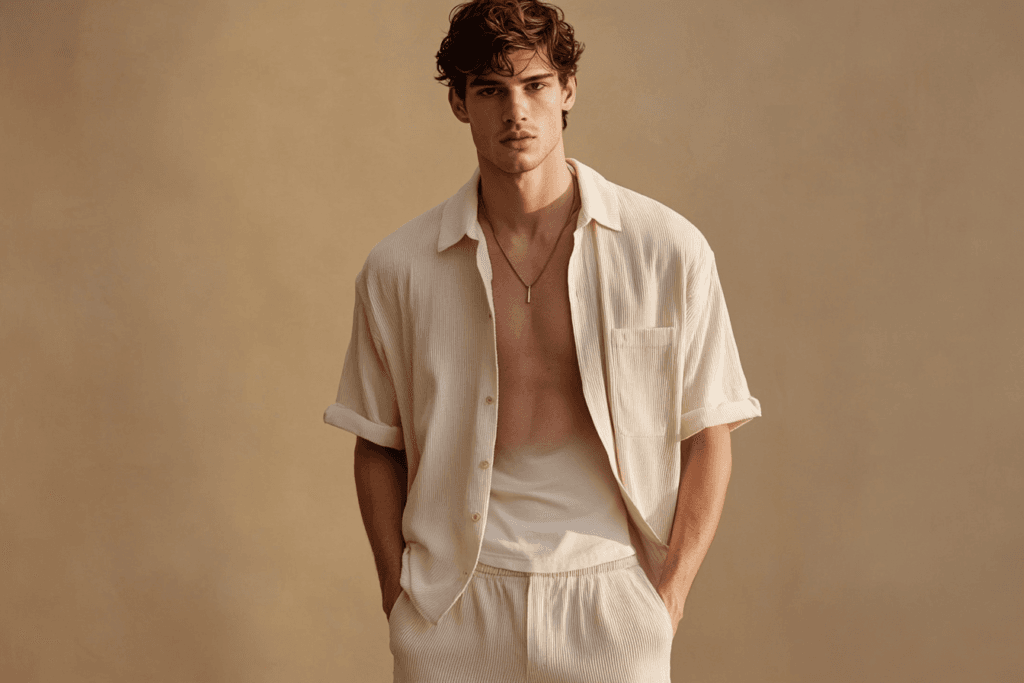
FAQ
What does “moisture-wicking” mean?
Moisture-wicking fabrics pull sweat off your skin. They help it dry fast, keeping you cool and comfy. It’s like your clothes have a built-in cooling system!
Are breathable fabrics only for hot weather?
No way! Breathable fabrics work in all seasons. They keep you cool in summer and stop overheating in winter. They’re great for any activity where comfort is key.
How do I know if a fabric is eco-friendly?
Check for labels like GRS or OEKO-TEX. These show the fabric meets eco-friendly standards. You can also ask if it’s made from recycled or biodegradable materials.
Can I wash moisture-wicking fabrics like regular clothes?
Yes, but skip fabric softeners. They block the fibers and lower performance. Use gentle detergent and cold water. Always read the care label for details.
Do natural fabrics like bamboo wick moisture as well as synthetics?
Yes! Bamboo blends wick sweat well and dry faster than cotton. They’re soft and eco-friendly too. Synthetics may dry quicker, but bamboo offers comfort and performance.
What’s the best fabric for high-intensity workouts?
Polyester mesh is a great pick. It wicks sweat, dries fast, and lets air flow. It’s tough enough for hard workouts like running or CrossFit.
Are recycled fabrics as durable as regular ones?
Yes! Recycled polyester is just as strong as regular polyester. It’s eco-friendly and still high-quality. You get great performance with less harm to the planet.
How can I test fabric breathability at home?
Try blowing through the fabric. If air passes easily, it’s breathable. You can also shine a light on it—tiny holes mean better airflow.
Pro Tip: Always test fabric samples before choosing them for your activewear line.
Related
1.Effect of different garments on thermophysiological and psychological comfort properties of athletes in a wear trial test →
2.Integrated cooling (i-Cool) textile of heat conduction and sweat transportation for personal perspiration management →
3.Activewear Market Size, Share, Trends and Forecast by Product Type, Material Type, Pricing, Age Group, Distribution Channel, End User, and Region, 2025-2033 →
4.A comparative study of mechanical and comfort properties of bamboo viscose as an eco-friendly alternative to conventional cotton fibre in polyester blended knitted fabrics →
5.Wool is naturally odour resistant →
